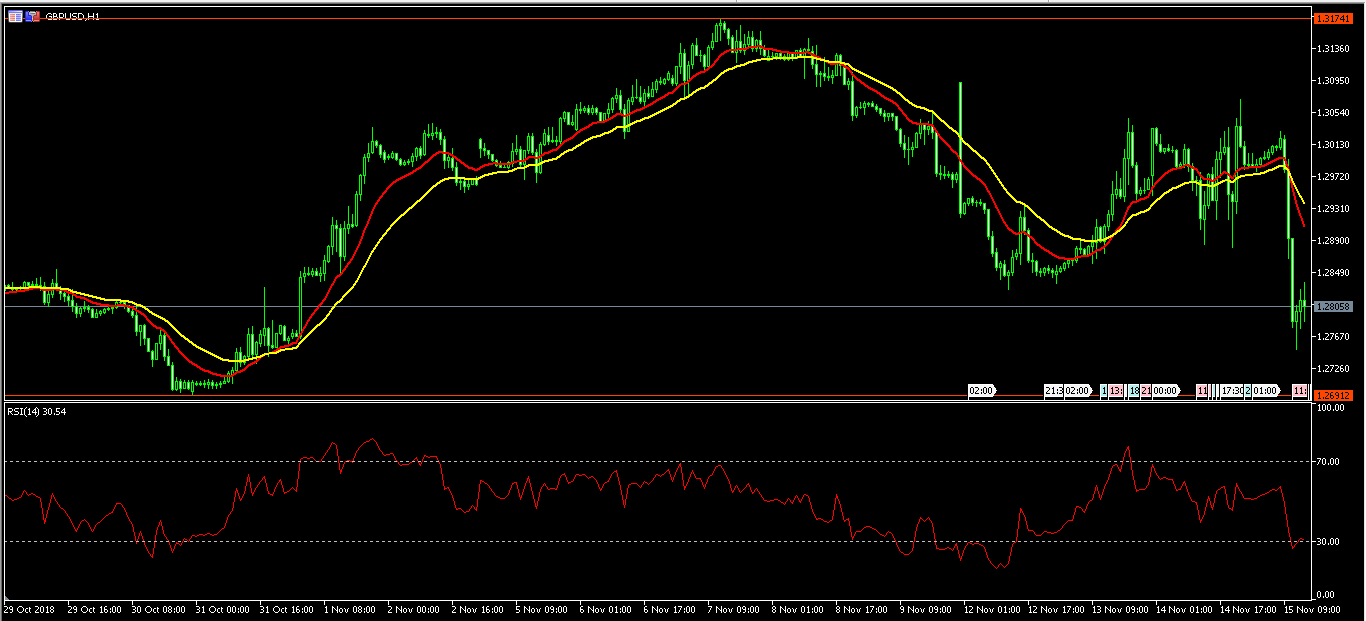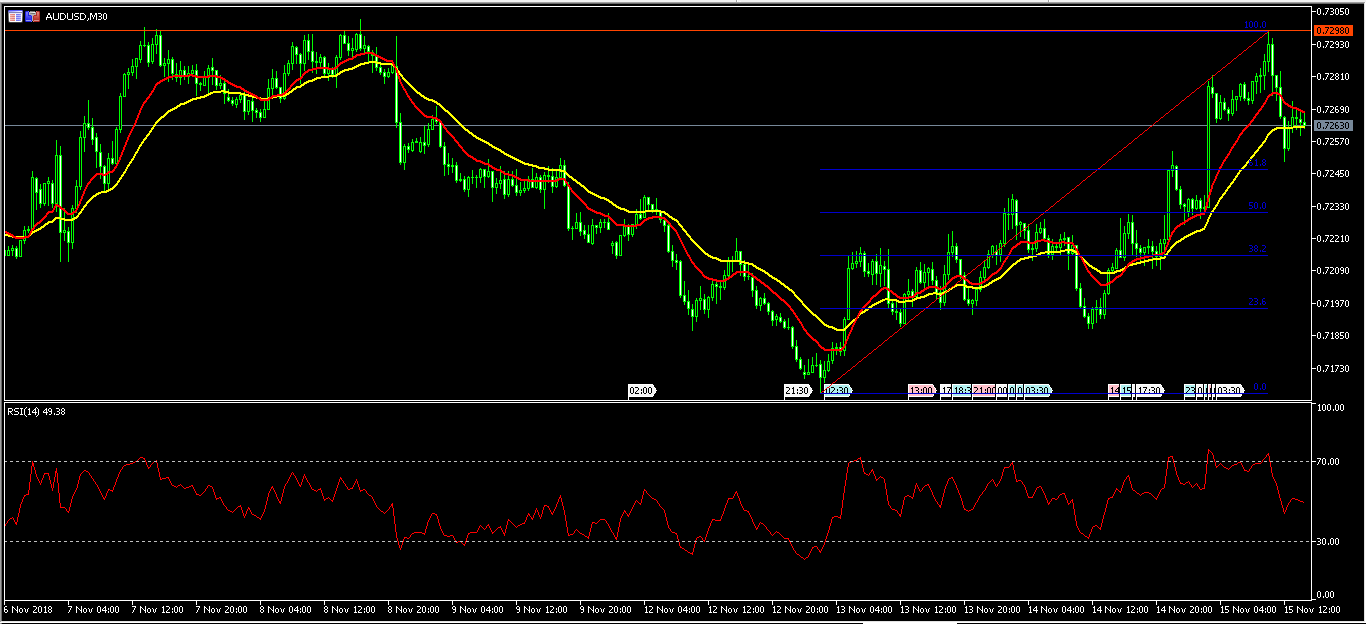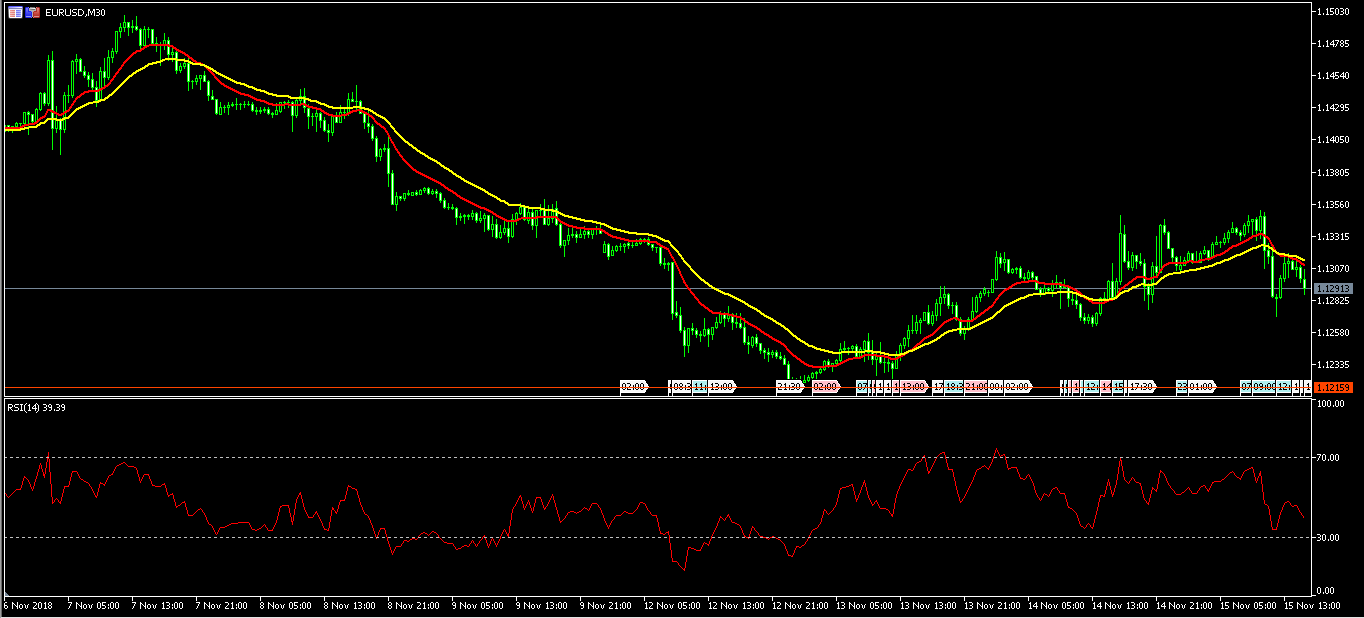The sterling fell sharply after the resignation of Brexit minister, Dominic Raab, and Work and Pensions minister, Esther McVey. The two resigned after Theresa May’s cabinet accepted the Brexit draft passed by the cabinet yesterday. In his resignation letter, Raab said that he could not accept the deal because of the regulatory regime proposed for North Ireland. He also said that he was opposed to an indefinite backstop agreement. On her part, McVey said that the draft went against the spirit of what the UK citizens voted for during the Brexit referendum. After their resignation, they were followed by junior Brexit minister Suella Braverman, parliamentary aide Anne-Marie Trevelyan, and North Ireland minister Shailesh Vara. These resignations led many to believe that a no-deal Brexit was a big possibility. In France, the country’s prime minister, Edouard Philippe said that the world should prepare for no deal.
As the Brexit issue continued, the Office of National Statistics (ONS) released the retail sales data. The numbers showed continued weakness in the country’s retail sector. The retail sales rose by 2.2%. This was lower than the 3.0% that traders were expecting. It was also lower than September’s growth of 3.3%. The core retail sales rose by 2.7% in September, which was lower than the 3.3% gain that traders were expecting. On a MoM basis, the core retail sales contracted by minus 0.4%, which worse than the 0.1% gain expected.
After initially rising, the Australian dollar changed course and fell sharply against the USD. Earlier on, Australia had released better-than-expected jobs numbers. The unemployment rate decreased to 5.0%, which was better than the consensus estimate of 5.1%. The participation rate improved to 65.6%, which was higher than the 65.5% that traders were expecting. The employment change rose to 32.8K in October, which was better than the 19.9K that traders were expecting. The sudden decline in the Aussie was probably because of investors’ realization that the RBA will not change its mind on leaving rates low for an extended period.
The US dollar index rose today as its peer currencies slumped led by the sterling. It was also helped by the positive retail sales data. The numbers showed that the core retail sales rose by a monthly rate of 0.7%. This was higher than the 0.5% that traders were expecting. The export price index rose to 0.4%, which was higher than the consensus estimate of 0.1%. Meanwhile, the initial jobless claims numbers rose to 216K as expected. This was higher than the previous week’s increase of 214K. The NY Empire State Manufacturing index rose to 23.30, which was better than the 19.3 that traders were expecting. The Philadelphia Fed Manufacturing index for November fell to 19.2.
Bitcoin declined sharply ahead of the proposed forking of Bitcoin Cash. The decline came as traders sold their Bitcoins in anticipation of the new cryptocurrency that will be created today. In cryptocurrencies, forking refers to the process of updating the software. The two types of forking are a a soft fork and hard fork. When the forking will happen today, a brand new currency will be created. Therefore, bitcoin and other currencies fell as investors rushed to invest in the new currency.
GBP/USD
The GBP/USD pair dropped to an intraday low of 1.2750. This was the lowest level since October 31. As the pair dropped, its RSI dropped to an intraday low of 27. The short-term EMAs on the hourly chart are above the current market price. At this point, with all the news that traders are expecting, the pair could continue being volatile.
Shortly after Australia’s employment numbers were released, the AUD/USD pair rose sharply to an intraday high of 0.7298. This was the highest level since October 8. It was also an important level as shown on the 30-minute chart below. The pair then declined to the 61.8% Fibonacci Retracement level of 0.7250. As it declined, so did the RSI, which dropped to a low of 43.9. The pair will likely resume the upward trend now that the cup and handle pattern has been completed.
This week, the EUR/USD has been moving up from a low of 1.1215 to a weekly high of 1.1352. Today, the pair dropped to an intraday low of 1.1270. The current price is slightly below the 30 and 15-day EMA while the RSI has fallen from 66 to the current 40. The pair will likely continue moving lower. If it does, it will test the previous low of 1.1200.
General Risk Warning for FX & CFD Trading. FX & CFDs are leveraged products. Trading in FX & CFDs related to foreign exchange, commodities, financial indices and other underlying variables, carry a high level of risk and can result in the loss of all of your investment. As such, FX & CFDs may not be appropriate for all investors. You should not invest money that you cannot afford to lose. Before deciding to trade, you should become aware of all the risks associated with FX & CFD trading, and seek advice from an independent and suitably licensed financial advisor. Under no circumstances shall we have any liability to any person or entity for (a) any loss or damage in whole or part caused by, resulting from, or relating to any transactions related to FX or CFDs or (b) any direct, indirect, special, consequential or incidental damages whatsoever.
Recommended Content
Editors’ Picks
EUR/USD holds above 1.0700 ahead of key US data

EUR/USD trades in a tight range above 1.0700 in the early European session on Friday. The US Dollar struggles to gather strength ahead of key PCE Price Index data, the Fed's preferred gauge of inflation, and helps the pair hold its ground.
USD/JPY stays above 156.00 after BoJ Governor Ueda's comments

USD/JPY holds above 156.00 after surging above this level with the initial reaction to the Bank of Japan's decision to leave the policy settings unchanged. BoJ Governor said weak Yen was not impacting prices but added that they will watch FX developments closely.
Gold price oscillates in a range as the focus remains glued to the US PCE Price Index

Gold price struggles to attract any meaningful buyers amid the emergence of fresh USD buying. Bets that the Fed will keep rates higher for longer amid sticky inflation help revive the USD demand.
Sei Price Prediction: SEI is in the zone of interest after a 10% leap

Sei price has been in recovery mode for almost ten days now, following a fall of almost 65% beginning in mid-March. While the SEI bulls continue to show strength, the uptrend could prove premature as massive bearish sentiment hovers above the altcoin’s price.
US core PCE inflation set to signal firm price pressures as markets delay Federal Reserve rate cut bets

The core PCE Price Index, which excludes volatile food and energy prices, is seen as the more influential measure of inflation in terms of Fed positioning. The index is forecast to rise 0.3% on a monthly basis in March, matching February’s increase.


